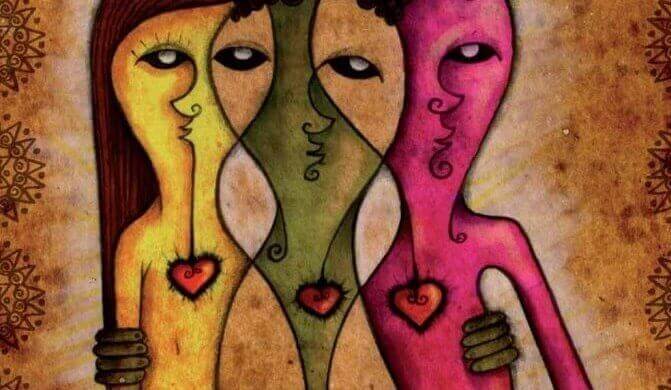Who says relationships are only built between two people?Lately, thanks to the liberation of traditional social roles, many people have discovered that monogamy is not the only option and have come to know the different types of non-monogamy.
Thus, terms such as “relational guidance” have emerged. This refers to the fact that just as people are attracted to a sex (or gender), we also have a preference over the type of relationship we like the most.
- If you’re a person who discovers your relational orientation.
- You’ll find in this article some ideas about the 7 types of non-monogamy that exist.
- Study them and find out if any of them seem appropriate to you.
You certainly had a monogamous relationship. Think about it for a moment and think about how you’ve felt (or felt) in the relationships you’ve already had. When you think about your monogamous experience, you may feel that something has failed or that it is not 100% suitable for Maybe it is time to stop and rething how you live your loves.
Below you will see the 7 main types of non-monogamy that exist; of course, there are many other ways to have an open relationship; however, most people who practice non-monogamy do so in one of the following ways:
A swinger relationship is one in which there is a main partner, in the style of the monogamous relationship, however, members of this relationship exchange partners with others.
The main difference between swinger relationships with the other 7 types of non-monogamy is that here, relationship members can only have sex with someone new if the main partner is present.
They are generally defined as people who have a very high sexual desire and who have many sexual fantasies. In general, people who are defined as “liberals” have no established rules about how and when they can have sex with others. On the contrary, they talk about their feelings with their partner when they show up.
This type of relationship can involve many ways of living the couple, for example, some people who engage in liberal relationships participate in group or partner sexual exchanges; others, on the other hand, are only open to occasional encounters if they occur spontaneously.
Some people want to have sex with different partners, however, instead of deceiving others, they want to do it in a consensual way and communicate all their intentions and actions, in this case we are talking about polysexual or non-sexual exclusivity.
The main feature is that the relationships these people have tend to be informal. In general, polysexuals consider that they cannot love more than one person at a time.
Polylove differs from polysisx in that those who practice it seek to have several real relationships, so those who choose polylove as a means of relationship are considered able to fall in love with more than one person.
To have such relationships, your lawyers talk about the importance of maintaining good communication and expressing emotions, so all members of the multiple relationship have their emotional needs met.
Hierarchical polyamor is a type of non-monogamous relationship in which there are several stable couples, but some of them are more important than others, so it is customary to talk about primary, secondary and even tertiary couples.
For others, however, talking about hierarchy goes against the very idea of polyamor, so advocates of the non-hierarchical version believe they can love all their partners equally, implying that no one has any privilege over the other members of the relationship.
Finally, some people prefer to enjoy their relationships without putting labels. Practitioners of relational anarchy believe that rules in a relationship only serve to break the emotional bond.
Human beings have the ability to think, question, discuss and compare; in addition to many other mental faculties that allow people to develop as such. However, these mental faculties are rarely used to choose the type of relationship that is best for people.
Therefore, it is important to use our mental capacity to ask us how we would like to live our relationships, so if you think non-monogamy may be for you it answers the following questions:
If you answered most of these questions in the affirmative, your personality or needs are more likely not currently being met; perhaps the best way to satisfy them is with non-monogamous relationships.
The good news is that we live in a time when we can choose, it’s not about deciding which kind of relationship is best, but which one is best for you at this stage of your life.
As in many aspects of life, the society in which we live makes us believe in different realities. Because Western culture was built on monogamy, in the minds of many people, there may still be misconceptions about relationships that are not based on it.
Here are some explanations needed to understand some of the implications of non-monogamy:
Different types of non-monogamous relationships, compared to more traditional ones, involve more flexible negotiation, in this way, there are more possibilities within them, depending on the interpretation and suggestions of those who practice it.
Opening your mind to the existence of these 7 types of non-monogamy can help you find the relationship model that suits you best.

